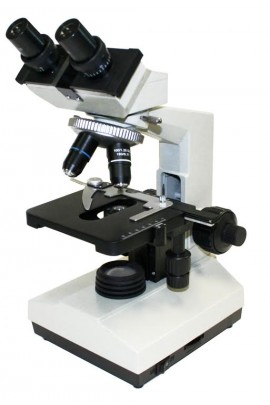And don't forget to schedule your microscope service. Click here for full information. Servicing and repairing your microscopes is very economical. Your students will enjoy working with a good microscope.
We hope that you enjoy the information contained in this Science Newsletter. Share the interesting science facts with your students and encourage them to discover more about the world in which they live.
Featured Products
National DCS-214-RLED
The DCS-214-RLED features high-speed, full resolution imaging technology built into one of our most popular microscopes. Use it as a conventional microscope or share live images with your class using WiFi tablets, wireless laptops, and HD-ready LCD monitors/projectors through HDMI. More Info
Human Torso
This 12 part, 50cm sexless human torso is appropriate for use in any classroom. This torso shows the major body systems and many anatomical features are numbered, which can be identified using the accompanying key card. More Info
Ohaus Frontier Mini Centrifuge
Small but powerful mini centrifuge for simple and quick liquid separation. With an 8-place 1.5/2mL tube rotor as well as a 4 place PCR 8-strip tube rotor, Frontier™ 5306 can accommodate 0.2mL 8 strip tubes or 32 individual PCR tubes. With the included adapter, 0.2mL and 0.5mL tubes can also be accommodated in the 8-place tube rotor. This centrifuge provides quiet, safe, and easy operation for your everyday quick spin-down applications. AC Adapter (included) Brushless quiet motor, auto shut-off safety switches. More Info
General Science History
In 1871, the American Museum of Natural History opened to the public in New York City. With a series of exhibits, the Museum's collection Went on view for the first time in the Central Park Arsenal, the Museum's original home, on the eastern side of Central Park. The museum began from the efforts of Albert Smith Bickmore, one-time student of Harvard zoologist Louis Agassiz, who was successful in his proposal to create a natural history museum in Central Park, New York City, with the support of William E. Dodge, Jr., Theodore Roosevelt, Sr., Joseph Choate, and J. Pierpont Morgan. The Governor of New York, John Thompson Hoffman, signed a bill officially creating the American Museum of Natural History on 6 Apr 1869.
In 1871, the American Museum of Natural History opened to the public in New York City. With a series of exhibits, the Museum's collection Went on view for the first time in the Central Park Arsenal, the Museum's original home, on the eastern side of Central Park. The museum began from the efforts of Albert Smith Bickmore, one-time student of Harvard zoologist Louis Agassiz, who was successful in his proposal to create a natural history museum in Central Park, New York City, with the support of William E. Dodge, Jr., Theodore Roosevelt, Sr., Joseph Choate, and J. Pierpont Morgan. The Governor of New York, John Thompson Hoffman, signed a bill officially creating the American Museum of Natural History on 6 Apr 1869.
Biology
In 1878, Louis Pasteur lectured at the French Academy of Science in support of his germ theory of disease, in which he held that many diseases were caused by tiny organisms. Since he still met with opposition from some scientists, he called their contrary opinions "fatal to medical progress." Pasteur also described ways to prevent infection, and provided the skeptics with an experiment with which to prove the theory to themselves.
Chemistry
In 1955, the element 101, a new artificial element was announced. It was synthesized by bombardment of Es-253 with helium nuclei using the cyclotron at the Radiation Laboratory of the University of California by Albert Ghiorso, Bernard G. Harvey, G.R. Choppin and S.G. Thompson, research chemists, headed by the Nobel laureate Glenn T. Seaborg. Being radioactive, with a half-life of between a half hour to several hours, this transuranic element cannot exist in nature since it decays so rapidly into lighter elements. It was named mendelevium, named in honor of Dmitry Mendeleev, the Russian chemist who worked on the periodic classification of the elements.
Physics
In 1926, the term "wave mechanics" was coined by nuclear physicist Erwin Schrödinger in a letter he sent to Albert Einstein. The term was applied to the newly emerging branch of physics which interprets the behaviors of subatomic particles according to a mathematical description in terms of a wave motion.
In 1926, the term "wave mechanics" was coined by nuclear physicist Erwin Schrödinger in a letter he sent to Albert Einstein. The term was applied to the newly emerging branch of physics which interprets the behaviors of subatomic particles according to a mathematical description in terms of a wave motion.
Earth Science
In 1930, the first U.S. motion picture of the 1.5 minute totality of an eclipse of the sun was taken from an airplane flying about 18,000 feet over at Honey Lake, California. The flight was sponsored by the U.S. Naval Observatory, and carried out by Lt. Leslie E. Gehres amd Chief Photographer J.M.F. Haase of the U.S. Navy. An attempt made during an earlier eclipse had been made by the same photographer on 10 Sep 1923, but was unsuccessful due to cloudy conditions. A U.S. Navy dirigible was first used to make a motion film of an eclipse on 24 Jan 1925. The dirigible was about 4,500 feet above a point almost 19 miles east of Monauk Point, New York, which it filmed the 2-min 5-sec eclipse.
Quote
The more you find out about the world, the more opportunities there are to laugh at it. - Bill Nye
Thank you for your support of Capital Microscope. Together we can bring the joy and excitement of science to students. They will then carry this knowledge into the future. Contact us when you need assistance in determining the best science materials for your classroom. We appreciate your support and the opportunity to work with you.











